4th – 12th grades
The 4-H Fun with Fashion event provides practice in consumer purchasing skills. For the contest 4-H members are given a scenario to shop for and model the clothes they selected. The cost of the outfit and accessories, comparison shopping, and appropriateness for the scenario are considered along with modeling skills.
The Clover Collection competition provides 4-H members with the opportunity to show off their sewing skills. Each participant will pick a pattern and sew their own garment for this fun contest.
Contact:
Michelle Matthews
jmatthe1@utk.edu
931-723-5141
What is Clover Bowl
- Clover Bowl is a quiz bowl type contest in which youth gain knowledge in the areas of Tennessee, 4-H, Agriculture, Life Skills, Science, and Government.
How Does it Work?
- Clover Bowl is available for youth in grades 4-8. Youth will only compete against others at the same grade level.
- Two teams compete against each other at a time.
- Teams consist of three to four members.
- Team members will be numbered 1 through 4.
- A moderator will ask questions from the Clover Bowl handbook.
- There are two rounds to Clover Bowl.
- The first round is the toss-up round. In the toss-up round, the first question will be directed to the number “1″ members. The next question will be directed to the number “2″ members, and so on. This will progress through the first eight questions of the contest.
- The second round is the speed round. In the speed round anyone may buzz in to answer the questions. A total of eight questions will be asked in the speed round.
- 4-H Clover Bowl Contest Handbook with complete contest rules, guidelines and study materials can be found at 4-H Clover Bowl | Eastern Region (tennessee.edu).
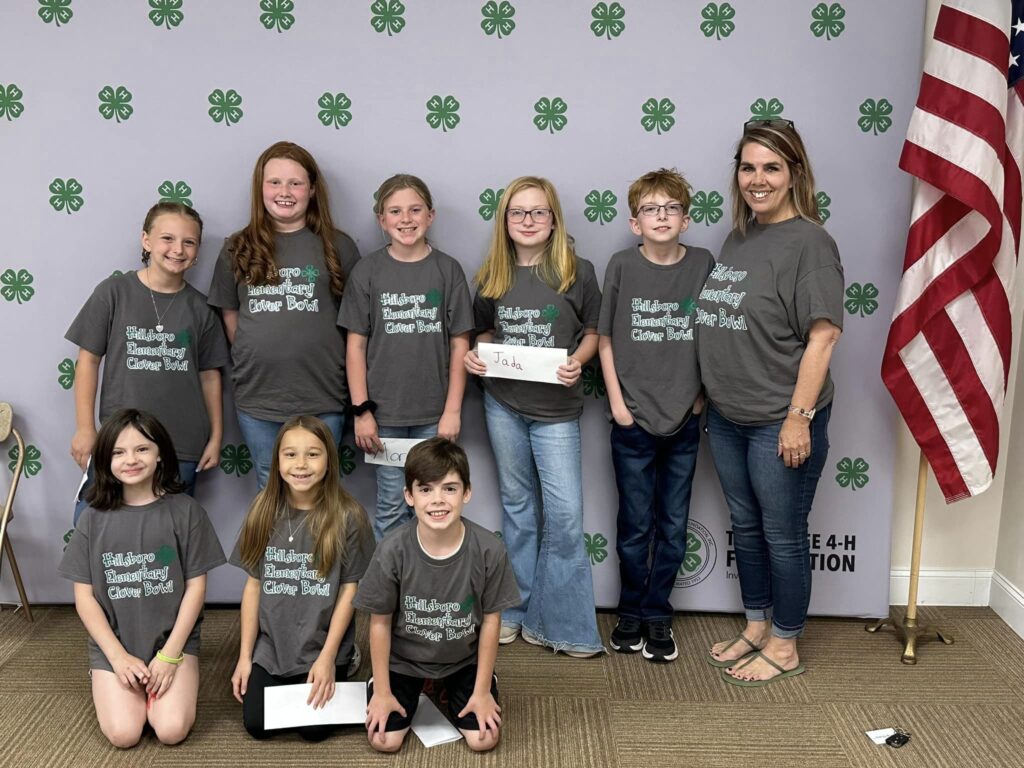
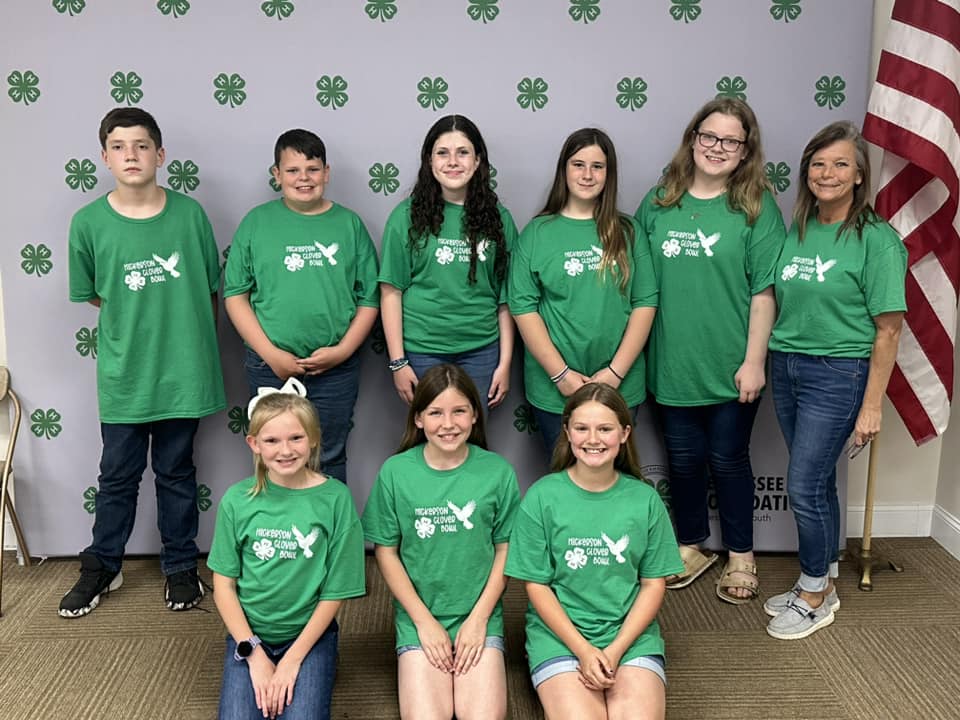
Contact:
Michelle Matthews
jmatthe1@utk.edu
931-723-5141
Central Region 4-H Clover Collection
The Central Region 4-H Fashion Events are held on the Youth Day at Tennessee State Fair in Lebanon. Usually the first Monday. Registration deadlines are the week before the competition.
- Day of Check in for Clover Collection will be from 1:00 – 1:30 p.m.
- Check in for Fun with Fashion, the other 4-H Fashion Event will be from 1:30 – 2:00 p.m.
- Fashion Shows for both events will follow
Premiums paid by the Tennessee State Fair are: First place: $12, Second place: $9, Third place: $7
Other prizes are awarded that day provided by sponsors and Extension donors.
The 4-H Clover Collection competition provides 4-H members with the opportunity to show off their clothing construction and sewing skills. Each participant will choose classes based on their grade as of January 1 of the current year. 4-H members may enter one garment or ensemble in each class for which their experience and grade level are included. 4-H members entering the beginning sewing categories should have less than two years of sewing experience.
Each entry will need to complete an online form that will describe in detail the garment(s) made. Include information on the fabric, color, style, trims used, and where you plan to wear the outfit. This script will be used in the fashion show. The form also asks for any sewing techniques and seam finishes used to complete the garment(s). The entry form also asks to describe the most challenging part of making this garment and what lessons were learned. Telling interesting, humorous, or special stories related to this project is encouraged.
Rules:
- Participants must be active 4-H members. Contact your TN Extension County 4-H Agent to register.
- 4-H members must sew their entire ensemble except for class 1. In this class, the top may be purchased.
- 4-H members may enter one garment/ensemble in each category for which their experience and grade level are included. 4-H members entering the beginning sewing categories should have less than two years of sewing experience.
- Pre-registration is required. 4-H members must submit a separate form for each entry.
- Judging will be completed before modeling on stage.
Class 1: Beginning Sewing grades 4 & 5 – Elastic Waist Garment: skirt, pants, or shorts with elastic in the waistband
Class 2: Beginning Sewing grades 6-12 – Complete ensemble which includes pants or shorts and skirt, and top, simple dress, etc.
Class 3: School Wear grades 4-7- Complete ensemble which includes pants, skirt, jeans, khakis, capri pants, or knee-length shorts with shirts or tops, or a casual dress, etc.
Class 4: Best Wear grades 4-7 – Complete ensemble which includes nicer dress, suit, or other dressy coordinating pieces
Class 5: School Wear grades 8-12 – Complete ensemble which includes pants, skirt, jeans, khakis, capri pants, or knee-length shorts with shirts or tops, or a casual dress, etc.
Class 6: Best Wear grades 8-12- Complete ensemble which includes nicer dress, suit, or other dressy coordinating pieces
Class 7 – Formalwear grades 8-12- Formal (long) or semi-formal (shorter lengths) prom-type or party dresses or formal suits.
Class 8: Accessory grades 4-12 – Any sewn accessory including belt, scarf, purse, wallet, backpack, travel kit or bag, headband, hat, tie or bowtie, apron, or other
Class 9: Costume grades 4-12 – Any garments considered a historic costume, cosplay ensemble, or another costume.
Class 10: Upcycled Garment grades 4-12– This category includes “New” garments created by significantly altering original garments or other fabric items. Sewing by machine or hand must be part of the alteration process, but other techniques may also be included.
Contact
Michelle Matthews
931-723-5141
jmatthe1@utk.edu
4th – 12th grades
What is CDM?
Consumer Decision Making is a contest for youth in grades 4-12 (as of Jan. 1, 2025) that consists of the following components:
- Ranking
- Questions
- Oral reasons (Senior High only)
- Group Think (Junior High and Senior High only)
Participants learn to make smart choices as a shopper (consumer). They will evaluate standards, quality, and criteria and then rank available options.
The 2025 topics include:
Water Bottles
Bedding (pillows)
Skin Care Sunscreen
Invitations
Contact:
Michelle Matthews
931-723-5141
jmatthe1@utk.edu
4th – 12th grades
Dairy Judging trains young people in decision-making skills related to the Dairy Industry.
4-H members will learn:
- How to evaluate the milk production of dairy cows and heifers.
- How to evaluate the proper structure of dairy animals.
- How to evaluate the longevity of dairy cows in production.
- How to justify placings in a set of oral reasons.
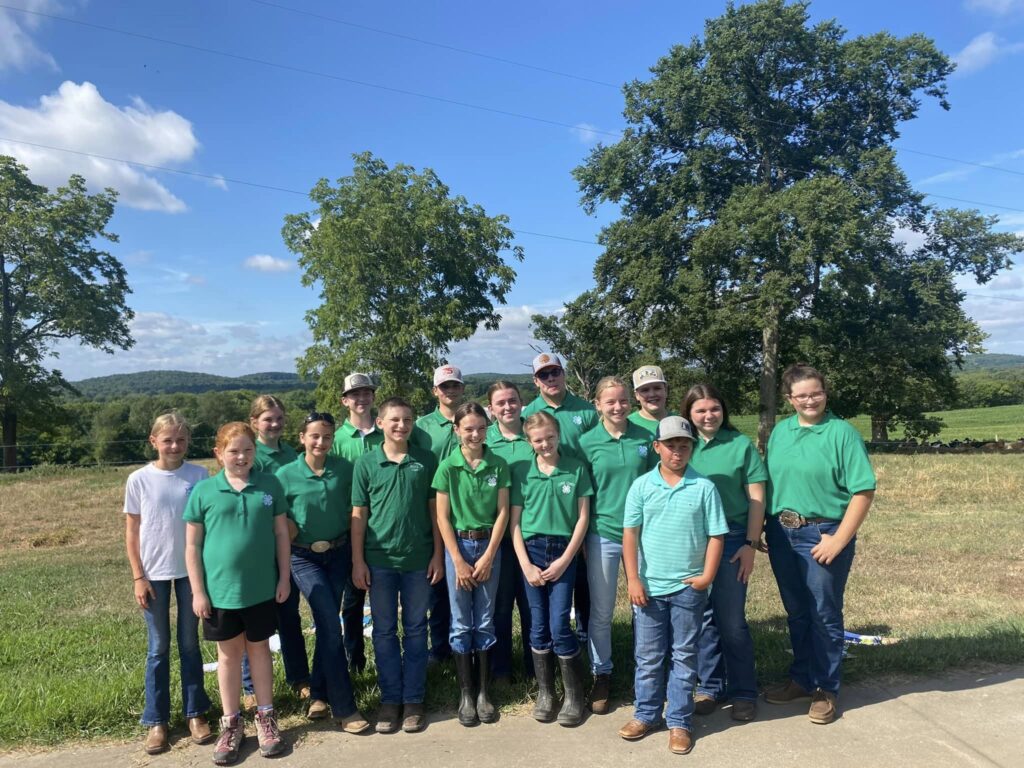
Contact:
Neil Slone
931-723-5141
nslone1@utk.edu
6th – 12th grades
Dairy products judging trains young people in decision making skills related to milk and milk products. Team members learn:
- How to evaluate the quality of dairy products.
- How to identify the differences between dairy products and non-dairy products.
The contest will be divided into four parts. Members will be asked to evaluate a group of six milk samples on the basis of flavor criticisms. Members will be asked to evaluate a group of five samples of cheddar cheese on the basis of flavor, body and texture. Members will also be asked to evaluate a group of six samples of vanilla ice cream on the basis of flavor, body and texture. Finally members will be asked to determine which of a given group of samples is a “real” dairy product and which is an artificial counterpart (butter vs. margarine, coffee whitener vs. half and half, whipped cream vs. non-dairy whipping topping, cheese vs. non-dairy imitation cheese). The Contest will be held in October each year.
Contact:
Michelle Matthews
931-723-5141
jmatthe1@utk.edu
Demonstrations
Guidelines:
- 4-H demonstrations must be completed as an individual (no teams).
- Youth may not use live animals or babies for their demonstration.
- Youth should provide all project materials and should be prepared to explain all steps to his/her demonstration.
- The demonstration should be 3-5 minutes long.
Parts of a demonstration:
A good demonstration has 3 parts: Introduction, Body and Summary
- Introduction: Use a catchy title and give an opening statement to let your audience know what you are demonstrating and the purpose of your demonstration.
- Body: Show and tell your project step by step. Hint: Plan this part first.
- Summary: Briefly restate the main points of your demonstration. Be sure to show the finished product. Give the source of your information.
The four “Ps” for giving a quality demonstration:
Planning
- Choose a simple idea from a 4-H Project with which you are familiar
- List steps involved in the demonstration
- Outline an explanation to go with the steps
- Make a list of all materials and equipment needed
Preparation
- Secure the necessary materials
- Prepare demonstration according to your plans and make sure your information is correct!
Practice
Presentation
- Check and re-check to make sure you have everything you need.
- Remember to speak slowly and clearly. Be yourself!
- Smile! Look at your audience whenever possible.
- Keep your working area neat and clean. Remember to keep all bowls, boxes, etc.to the side of you and “work” in the center. Have towel ready for any messes.
- Remember not to mention any commercial brands or store names.
- Tell your source of information.
- Conclude with your title poster and a finished product if you have one.
- Ask for questions after the conclusion. Answer as well as you can. If you do not know the answer, admit it and promise you will try to find that information.
Contact:
Michelle Matthews
931-723-5141
jmatthe1@utk.edu
6th – 12th grades
4-H FCS Skillathon is open to any 6th-12th grade 4-H member. In FCS Skillathon, youth will learn to identify materials, equipment, and techniques in the areas of Foods and Cooking, Clothing and Sewing, and Housing and Interior Design. The goal for these practices will be to prepare youth for the Central Region 4-H FCS Skillathon contest held in August.
Contact:
Michelle Matthews
931-723-5141
jmatthe1@utk.edu
Central Region 4-H Clothing Events
Purchased Clothing/Fun with Fashion
**For youth in grades 4-12 as of January 1 of the current year**
Fun with Fashion is a contest where a participant will:
- Familiarize themselves with the current year’s classes/scenarios
- Decide which classes/scenarios they want to participate in
- Shop for an outfit for each class/scenario they want to participate in staying within budget (the budget will be disclosed in the classes/scenarios )
- Compose a script to be read as they model their outfit
- Model their outfit in the Central Region 4-H Fashion Show
Additional Need to Know Information:
- The Central Region 4-H Clothing Events occur each year at the State Fair in Wilson County.
- Each grade level will have three classes/scenarios to choose from. Participants may participate in multiple classes.
- Comparison shopping is advised. Always check out the sale racks!
- If participating in multiple classes/scenarios, multiple outfits must be purchased.
- Shoes are not included in the budget/accessories are included
- Participants will complete and submit an entry form in Microsoft Forms. This is usually due two weeks before the show.
On the day of the Fashion Show:
- Participants may arrive wearing their outfit or they can change into it upon arrival. Participants modeling in multiple classes/scenarios will have clothing changes. Changing rooms will be available.
- A professional will be on-site to teach youth how to model on stage. Participants will learn what to expect on stage and how to best showcase themselves and their outfits.
- When it’s time for the fashion show, participants will line up as directed and then model their outfits as an emcee reads their script.
- Judges will be evaluating participants as they model.
- After all participants have modeled their outfits, scores will be tabulated, and placings will be announced.
Criteria that will be evaluated:
- Confidence in modeling
- Ability to accessorize an outfit to complete a finished look
- Creativity
- The outfit modeled is age-appropriate
- Fit: Enough wearing ease for comfort and movement/smooth fit/absence of wrinkles or sags where they do not belong
- Consumer skills: comparison shopping/staying within a budget
Information needed from your Extension Agent:
- Date, time, and location
- Scenarios/classes
- Link to Microsoft Forms
- Deadline to submit Microsoft Forms
Central Region 4-H Fun with Fashion co-directors:
- Michelle Matthews: jmatthe1@utk.edu
- Terri Orr: terorr@utk.edu
Contact
Michelle Matthews
931-723-5141
jmatthe1@utk.edu
The 4-H Grillmaster Challenge contest consists of a team of four 4-H’ers in which each team member creates a recipe and grills one of the following meats for judging: beef, pork, chicken, or lamb. Teams are judged on fire and food safety skills along with taste. By participating in the 4-H Grillmaster Challenge, 4-H’ers learn teamwork, nutrition and food safety skills, and the art and science of grilling in an outdoor setting.
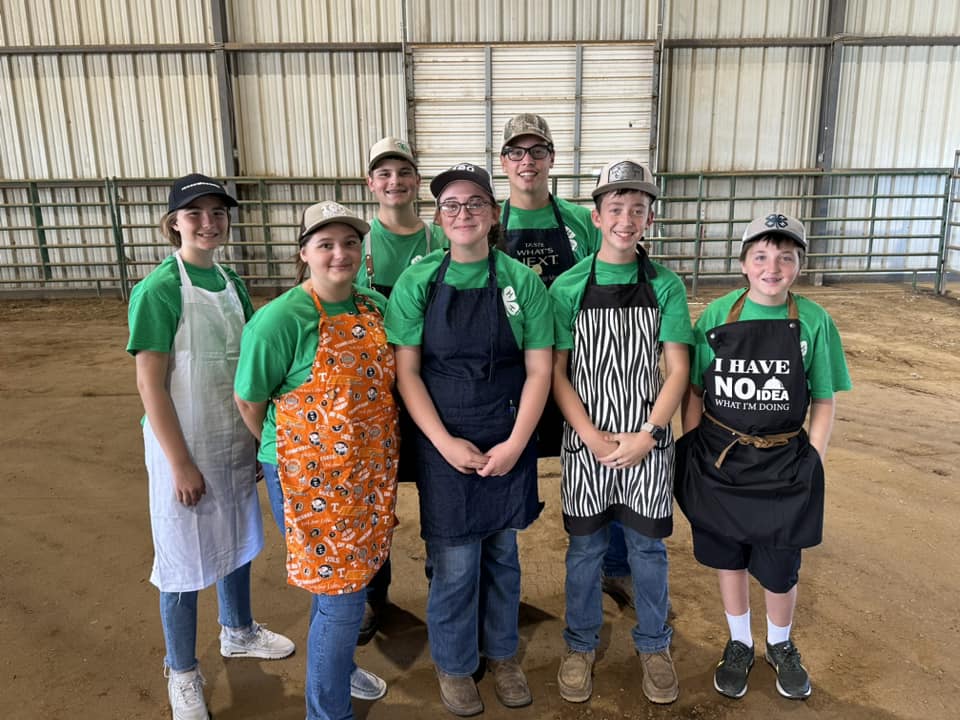
Contact:
Neil Slone
931-723-5141
nslone1@utk.edu
4th – 12th grades
Horse Bowl and Hippology trains young people in decision making skills related to horse care and management. 4-H members learn:
- How to care for and manage equine.
- Knowledge related to the horse and the horse industry.
- How to apply this knowledge by answering questions in a competitive format.
Contact:
Michelle Matthews
931-723-5141
jmatthe1@utk.edu
4th – 12th grades
This is a county team competition with a team consisting of 3 or 4 members. Members will be asked questions taken from the Tennessee 4-H Horse Bowl Handbook. The competition is much like the game of jeopardy. 4-H members will be asked questions while using an electric buzzer system. The team will receive points for correct answers and penalty points for incorrect answers. At the present time a District and State competition is available with the winning senior state team representing Tennessee at the Eastern National Championship in Louisville, Kentucky.
Contact:
Michelle Matthews
931-723-5141
jmatthe1@utk.edu
Interactive Exhibit
An interactive exhibit is where an individual creates an exhibit board highlighting a particular topic. Individuals will display his/her board and give an informal talk on what their board is about and what they have learned as a result of his/her effort preparing the board.
Rules to Follow!
• Free standing exhibit boards or posters should be used. Space from the table to the floor may be used. Items may be displayed on the table.
• The 4-H members will be expected to explain their exhibit in 1-2 minutes.
• Make sure the exhibit has a title and include the word 4-H or the clover somewhere on the exhibit.
Follow these 9 steps for an effective Exhibit:
1. Determine your Audience: Your audience will be a group of judges that will have a short amount of time to look at your exhibit. So you will need an exhibit that gets their attention. Think about what you would like to look at. Do you want to read a long paragraph to get the idea of an exhibit?
2. Determine your Purpose: Do you want your judge to: Take Action? Solve a problem? Or Change his/her opinion?
3. Develop the Theme: Choose a single theme or subject. Make sure that every element, whether visual or text, supports your theme. Leave out anything else!
4. Treat the Subject Visually: You must be able to get your purpose across without having to explain it to someone. In other words, ask yourself the following questions: If I set up this exhibit, and then left, would a judge be able to understand the purpose of my theme?
5. Design: Good design leads the judge to stop, look and remember! Your judge should be able to understand the overall story, not just notice separate parts. Don’t over crowd your exhibit, keep it simple but informative!
6. Visuals: Good visuals are a must! Use photos, drawings, maps, charts, graphs, actual objects or models.
7. Lettering: When planning your exhibit, pay attention to the size, style, and spacing of the letters. The size of the letters should be judged by the viewing distance.
8. Color of Board and Letters: Contrast is one of the most important considerations in determining color combinations for exhibits. Use dark letters on a light board and light letters on a dark board.
9. Text: Keep it brief! Try to use active verbs. For example “Improve Your Farm” rather than “Farm Improvements.” A picture should speak for itself without any explanation. Use simple, commonly used words.
Contact:
Michelle Matthews
931-723-5141
jmatthe1@utk.edu
4th – 12th grades
The Coffee County 4-H Livestock Judging program gives youth the opportunity to learn more about cattle, sheep, goats, and pigs. 4-H’ers learn critical thinking and teamwork while developing self confidence in their decision making skills. Senior High 4-H members must defend their placings by giving oral reasons.
Contact:
Neil Slone
931-723-5141
nslone1@utk.edu
6th – 12th grades
The purpose of Meat Identification judging is for 4-H’ers to develop an appreciation for red meats as a protein source and to become better informed as consumers. Each member will learn how to recognize various cuts and quality grades of meat, identify which species the meat is from, and learn the proper cooking method for each.
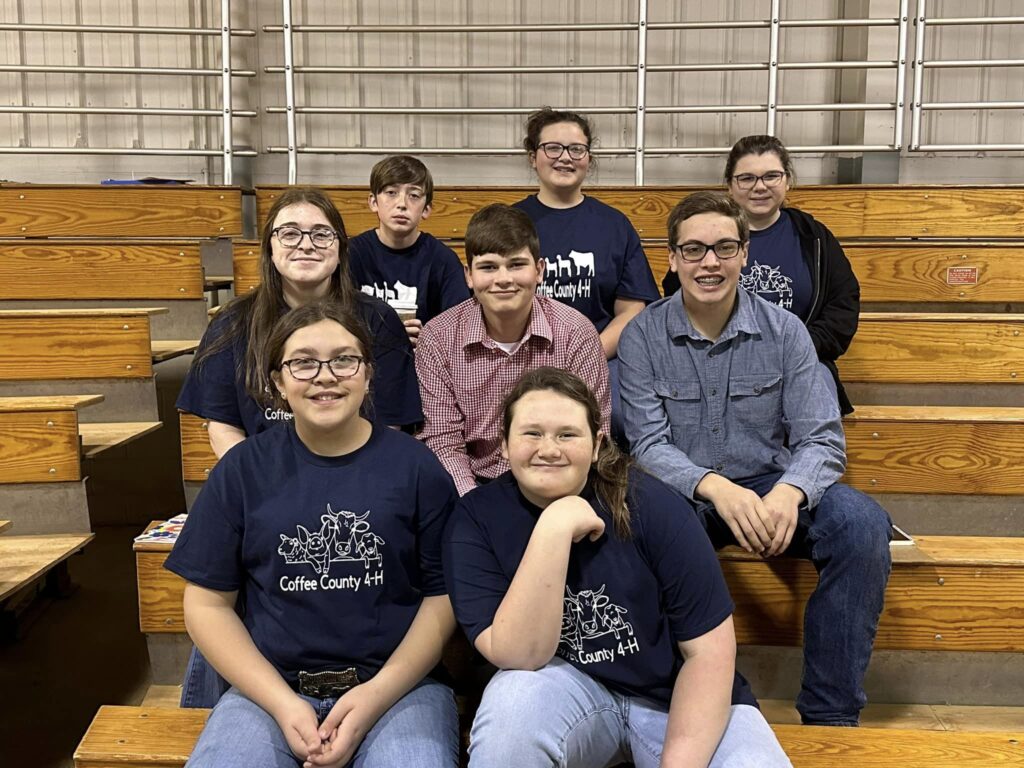
Contact:
Neil Slone
931-723-5141
nslone1@utk.edu
4th – 12th grades
Youth are trained in decision making skills related to the evaluation of chicken and egg production. 4-H members learn:
- USDA standards in grading ready-to-cook poultry and eggs.
- The competition will be held in September.
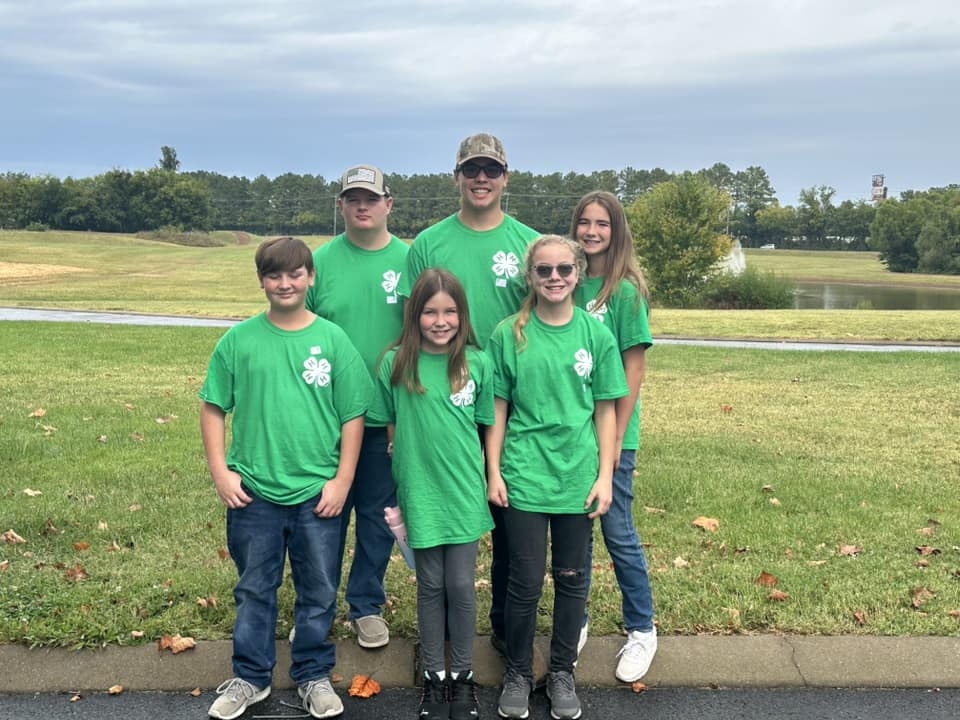
Contact:
Neil Slone
931-723-5141
nslone1@utk.edu
4th – 12th grade
Young people are trained in decision making skills related to wildlife management. 4-H members learn:
- To determine wildlife management practices needed for a given situation.
- To match foods to the different species of wildlife which eat them.
- To match the different habitats used by each species of wildlife.
Contact:
Neil Slone
931-723-5141
nslone1@utk.edu